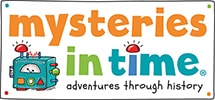
Evacuees World War 2 (WW2)
The Evacuation of Children
The evacuation of children from cities to the countryside during the Second World War, known as “Operation Pied Piper,” is a significant event in British history. It’s an example of how nations plan and execute wide-scale civilian protection measures in times of war.
The Need for Evacuation
As political tensions escalated towards the end of the 1930s, the British government foresaw the distinct possibility of aerial bombardments on major cities if war broke out. A large-scale evacuation plan was therefore drawn up, focusing primarily on children, as they were considered the most vulnerable.
Who Were Evacuated?
Operation Pied Piper was set into motion on 1st September 1939, two days before Britain officially declared war on Germany. Approximately 1.5 million individuals were evacuated in the first three days alone. The majority were school-aged children, but the evacuees also included teachers (to continue children’s education), pregnant women and some individuals with disabilities.
The Process of Evacuation
Organised by schools, the children, who wore labels with their personal details for identification, gathered at assigned points like railway stations. They carried a small bag of necessities and gas masks. From there, they were transported by trains, buses and even boats to more rural areas.
The children had no knowledge of where they were going or when they would return home. Most were billeted with foster families, but some were placed in group accommodations like schools, churches or farms.
Life as an Evacuee
For many urban children, life in the countryside was a stark contrast to what they were used to. They had to adapt to a different way of life, interacting with new people, and sometimes even different dialects. Despite the challenges, there were also opportunities for new experiences – many city children saw farm animals or woodland for the first time.
The Role of the Foster Families
The foster families who took in the evacuated children were crucial to the success of Operation Pied Piper. These were predominantly rural households, and their willingness to accept, house, feed and care for evacuees demonstrated a national unity in a time of crisis. The government provided a small weekly stipend to support the costs of caring for the children.
Overseas Evacuations
Not all evacuations stayed within the borders of the UK. Some children were evacuated overseas to other parts of the British Empire, the United States, Canada, and other allied countries.
The Impact and Results of the Evacuation
Operation Pied Piper was a monumental logistical undertaking with both positive and negative effects. On the one hand, it potentially saved the lives of many children, as urban areas, particularly London, experienced heavy bombing during the Blitz.
However, it also caused distress and emotional upheaval. Separation from parents and familiar surroundings was hard on the children, and not all foster arrangements were happy ones. Moreover, the adjustment upon returning home after the war, often after years of absence, was another hurdle for the evacuees.
Multiple Waves of Evacuation
The evacuation operation wasn’t a one-time event. It occurred in multiple waves, in line with the intensity and location of the bombings. After the initial operation in September 1939, further mass evacuations were organised, most notably in the summer of 1940 and during the Blitz in 1944.
Impact on Post-War Society
The mass evacuation during the war had far-reaching effects on post-war British society. It highlighted social disparities, especially the poor health and living conditions of inner-city children. This awareness played a significant part in shaping the post-war consensus and the foundation of the welfare state.
While Operation Pied Piper is a testament to the protective measures a nation can take during a war, it also serves as a poignant reminder of the immense social and personal disruption that war causes. Understanding this part of World War II history allows us to appreciate the profound impact of global conflicts on everyday lives.

